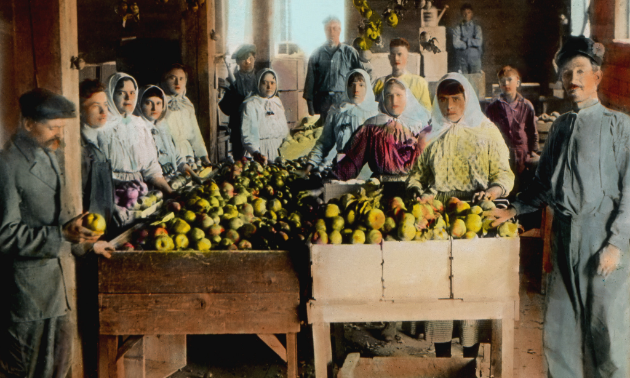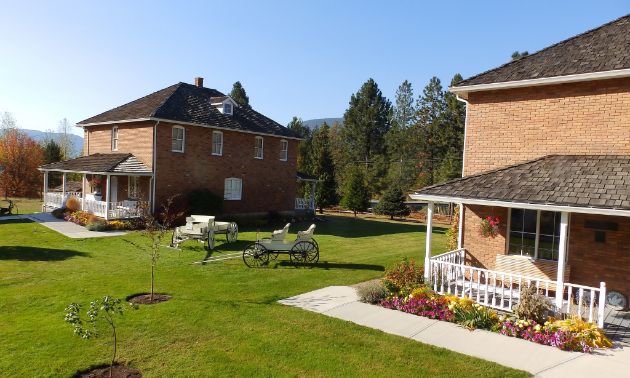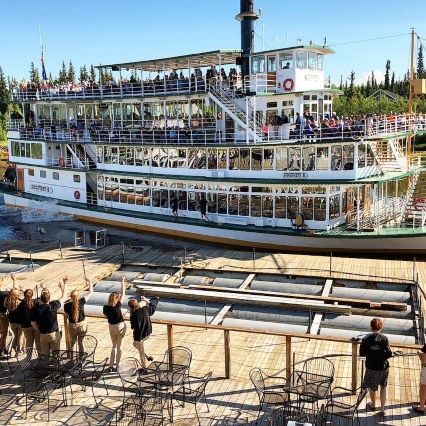Experience a replicated Doukhobor village in Castlegar, B.C.
Immerse yourself in the Russian Doukhobor life of the early 1900s

In the West Kootenay, it’s easy to get distracted by the breathtaking scenery. Located in British Columbia’s south-east, the area is home to huge lakes, green valleys and impressive peaks. But in addition to enjoying the beauty and recreational opportunities, visitors can also dive into the area’s rich history.
Take Castlegar. Home to nearly 8,000 people, this city is tucked at the junction of the Columbia and Kootenay rivers. Because of this ideal location at the confluence, First Nations people used to fish and trade here. Explorer David Thompson first passed through in 1811. European trappers then arrived. By the end of the 1800s, prospectors came looking for gold. But perhaps the most fascinating and unique aspect of Castlegar’s history is the Doukhobors.
Settling down for a better life
The Doukhobors were a group of Russians who were opposed to the excessive and authoritative practices of the Orthodox Church and the State. As pacifists who practised a simpler form of religion, they were perceived as a threat to the church and the Czar and forced to flee Russia.
About 5,000 emigrated to the Kootenay-Boundary region and constructed over 80 communal villages. One of the largest was located in Ootischenia (meaning “Valley of Consolation”), across the Columbia River from current-day Castlegar.
At its peak, the local Doukhobor holding company, the Christian Community of Universal Brotherhood, owned over 28,000 hectares (70,000 acres) and was the largest communal organisation in North America. Unfortunately, in 1938 it underwent foreclosure and the banks seized all its holdings. Although that marked the end of their communal life in the Kootenays, many Doukhobors still live in the region and proudly maintain their heritage.
Walk in their footsteps
The best way to get a taste of customary Doukhobor life is to visit the Doukhobor Discovery Centre, located on orchard land of the original Ootischenia settlement. This attraction replicates a communal village and comprises both original buildings and buildings constructed from reclaimed Doukhobor materials.
Visitors can browse the museum, which contains recreated rooms and over 1,500 artifacts, and wander the grounds, lush with heritage plants and home to a statue of Russian writer Leo Tolstoy, who sympathized with the Doukhobors’ plight. Visitors can also check out a barn, bathhouse and blacksmith shop, view documentary films and see photo archives. There’s also a gift shop and craft centre on-site, in which members of the local weavers and spinners guild often demonstrate their skills.

Burials and a bridge
Two additional sites on the outskirts of Castlegar illuminate other aspects of early Doukhobor life.
Boasting scenic views of both the Columbia and Kootenay river valleys, the hilltop Verigin Memorial Park is a Doukhobor burial site and flower garden. Overlooking the original settlements of Ootischenia and Brilliant, it contains the remains of two of the local leaders of the Doukhobor movement: Peter V. Verigin, who died in 1924, and his son Peter P. Verigin, who died in 1939. There are also other relatives buried here.
A bit farther up the Kootenay River, the Brilliant Suspension Bridge also honours Doukhobor history. Constructed in 1913 almost entirely by Doukhobor settlers using hand labour, it replaced a ferry that linked the Ootischenia and Brilliant communities, located on opposite sides of the river. In 1966, it was abandoned when the new Highway 3A bridge was built, but public outcry saved it from demolition. It was declared a National Historic Site in 1995, and by 2010 was restored and reopened as a footbridge. As part of the Trans Canada Trail, it’s the main attraction of the Brilliant Bridge Regional Park.
Altogether, these three sites offer great ways to get off the road, stretch your legs and immerse yourself in the past that continues to shape the modern communities around you.






